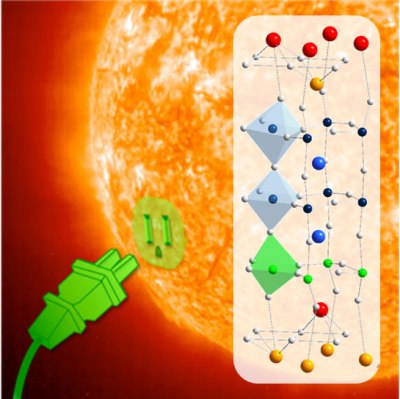The Oak Ridge National Laboratory (ORNL) researchers have made a novel discovery that has led to the establishment of new boundaries for tuning band gaps in insulating materials.
 ORNL's material scientists developed a synthesis strategy for discovering novel complex-oxide thin films for stronger solar light absorption.
ORNL's material scientists developed a synthesis strategy for discovering novel complex-oxide thin films for stronger solar light absorption.
In the development of energy materials and opto-electronic devices, the attainment of wide band gap tunability is a desirable factor. The electrical conductivity and the upper wavelength limit of light absorption of a material are two factors that are strongly determined by the band gap.
Complex transition metal oxides are promising materials for different types of energy and information applications. Reducing the band gaps of these insulating materials may affect the beneficial physical properties in these materials. A method that can reduce the band gaps without affecting the beneficial properties will be highly desirable for developing energy materials and opto-electronic devices such as light emitting diodes, solar cells and displays.
Ho Nyung Lee and his teammates at ORNL have realized a reduction of 30% in complex metal oxide band gap, by utilizing a layer-by-layer growth technique. Lee was awarded the Presidential Early Career Award for Scientists and Engineers (PECASE), for this technique. The researchers tuned the band gaps of complex oxide materials utilizing atomic-scale growth control and developed novel artificial materials. The 'epitaxy' growing technique can be used to accurately change the composition of thin-film crystals in the range of sub-nanometers. It can also be used for designing novel artificial materials.
Tuning of band gap in conventional semiconductors has been successful. The previous band gap reduction of 6% (0.2 eV) has been surpassed by the 30% achievement using complex-oxide materials. These materials are stable even under severe and extreme environments.
Ho Nyung Lee, Woo Seok Choi, David Singh, Gerald Jellison, Matthew Chisholm and Taekjib Choi at the Materials Science and Technology Division in ORNL authored the paper, "Wide band gap tunability in complex transition metal oxides by site-specific substitution," which describes the patent pending technology.